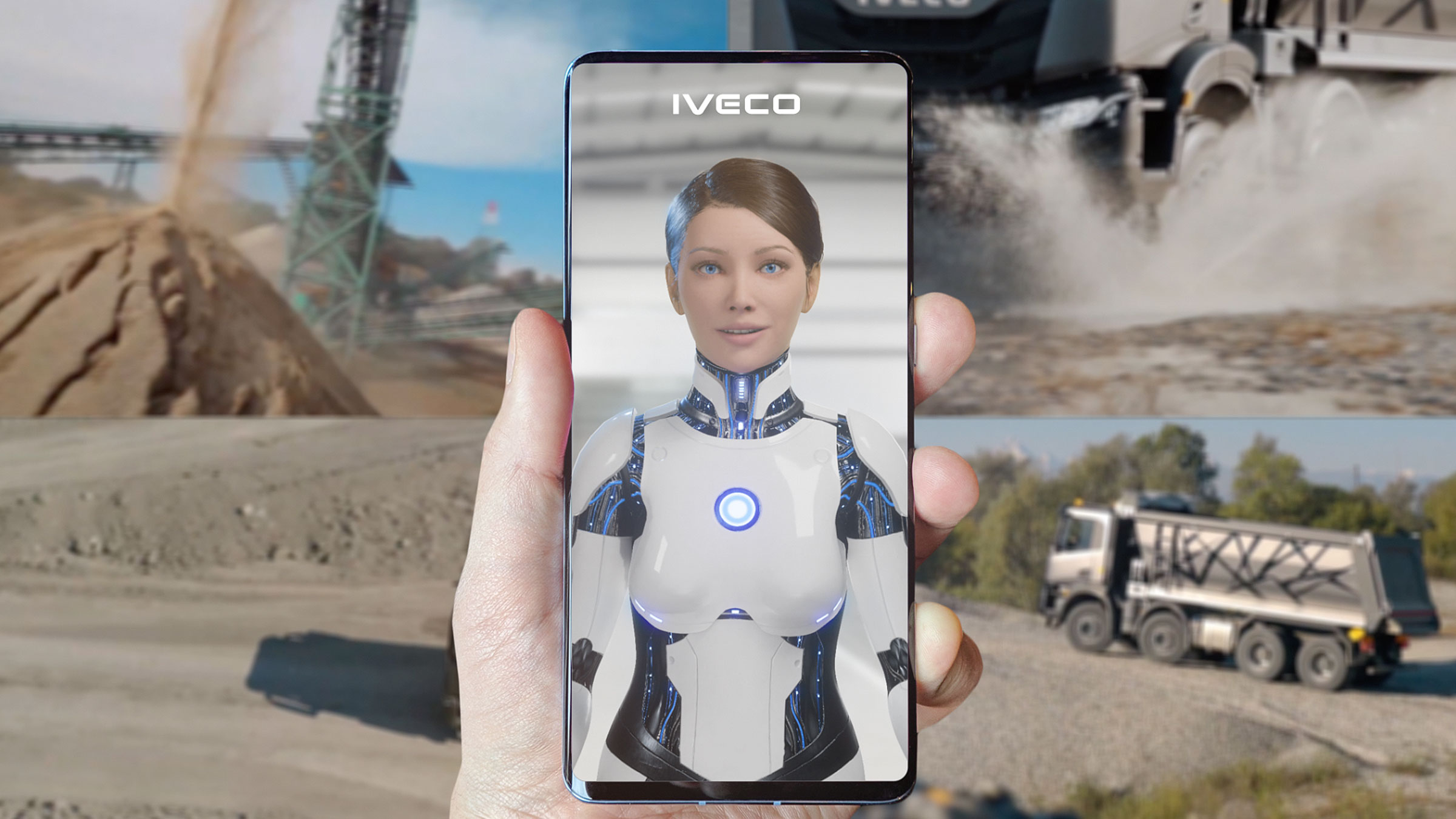How virtual assistants are boosting customer service
In today's digital age, the virtual assistants have become a key tool to improve customer serviceespecially when integrated into immersive experiences. Immediacy and personalization are two key points that users are looking for in their customer journey, where their union with Artificial Intelligence allows to offer faster, more accurate and tailored interactions with users.
Thanks to AI, these assistants not only answer frequently asked questions, but learn from past interactions and continuously improve their answers, adapting to users' changing needs. They have even become true intelligent agents at the service of brands and customers.
Also, if you are looking for a way to transform your customer service, in this article we present the success story of Astún, how it is applying AI to optimize processes and improve communication with its customers.
Get ready to discover in this article how virtual assistants are rewriting the rules of digital engagement.
Virtual assistant: what it is and how it is changing the relationship with customers
Virtual assistants have evolved from being simple bots to becoming true digital brand ambassadors. Thanks to technologies such as artificial intelligence and natural language processing, it is possible to interact with users in a close, personalized and available 24/7 way. It is no longer just about answering questions, but about generating conversational experiences that provide real value, anticipate needs and strengthen the bond with the customer.
This evolution is radically transforming customer service, making it more agile, emotional and memorable.. From augmented reality environments to immersive spaces such as the metaverse, virtual assistants guide, resolve and personalize every interaction. In a world where immediacy is key, these technological allies make possible what every brand desires: less waiting and more connection. An example of a virtual assistant can be found in Turrón, the virtual mascot of La Torre Outlet shopping mall that accompanies users in the process of learning more about the center's stores and services; and at the same time, manage their wish list and letter to Santa Claus as part of the Christmas campaign.
Conversational assistants vs. intelligent agents
Conversational assistants and intelligent agents are related technologies, but with key differences in terms of their interaction capabilities and functionality.
- The conversational assistants are systems designed to handle simple interactions via text or voice, answering frequently asked questions and guiding the user through specific tasks. Their functionality is limited to predefined rules and they cannot adapt to complex situations, which can make conversations more rigid.
- The intelligent agents go a step further by not only assisting, but also executing actions autonomously. They use Artificial Intelligence (AI) and machine learning to provide personalized responses and adapt to the user's context and preferences. Unlike conversational assistants, they can handle more complex tasks, learn from each interaction and offer advanced data-driven solutions, enhancing the customer experience with a more dynamic and efficient service.
You may be interested in → How automation impacts companies and maximize its impact.
Applications of virtual assistants in business environments
Virtual assistants are revolutionizing the way companies interact with both customers and employees. By integrating Artificial Intelligence and automation, these assistants are offering customized and efficient solutions that improve the user experience and optimize internal processes.
In this section, we will discover how virtual assistants are becoming more and more popular. applying in a variety of business environmentsfrom customer service to training and onboarding, transforming the way companies operate and communicate.
Personalized virtual assistants to guide the user experience
Virtual assistants have become an essential tool for guiding the user experience in business environments. Thanks to their customization capabilities, these assistants can adapt to the individual needs and preferences of each user, providing a unique and seamless experience. Whether interacting with customers, offering support or assisting with complex processes, customized virtual assistants can be used to optimize the user's pathensuring that every interaction is relevant, efficient and consistent with brand values.
Among the virtual assistants that are already available we find Cervantes IAthe gvirtual tourist guide of Alcazar de San Juan. The Spanish writer himself comes to life thanks to Artificial Intelligence to talk about his beloved Castilla, his life and his work. A unique experience that revolutionizes customer service and the use of AI in tourism.
You can continue to learn more about this subject in our post→ Artificial Intelligence in tourism: characteristics and examples.
Automation and troubleshooting
Virtual assistants also stand out because of their ability to automate processes and resolve questions instantly. This not only speeds up the response time, but also guarantees 24-hour customer service.
By being able to handle multiple requests at the same time y provide fast and accurate answersVirtual assistants enable companies to improve productivity, reduce human error and free employees for more strategic tasks.
In addition, thanks to its integration with the Artificial IntelligenceThese agents evolve over time, improving their ability to provide customized and contextual solutions.
Among the most interesting use cases are IRIAthe Iveco virtual assistantwhich brings together in one place all the information about the company's different models, its different departments and technical assistance for its employees, dealers and truck drivers.
Although virtual assistants are not only for resolving doubts, they also function as virtual personal assistants to perform specific tasks, such as managing calendars, assisting with order processing, or providing customized recommendations
Integration of assistants in business activities
The integration of virtual assistants in key business activities, such as training, onboarding and technical assistanceis transforming how companies manage training and support. These assistants guide new employees, offer personalized content in the training process and provide immediate solutions in technical assistance.
In addition, its application extends to events, showrooms y gamified spacesThey interact with participants, providing information and enhancing the experience.
Virtual assistants not only optimize interaction with customers and employees, but also create immersive experiences that increase business efficiency and productivity. In this area, the avatar and assistant in Corporate Social Responsibility stand out, Clara of the Latin American company Progress.
Why are more and more companies using virtual assistants as employees?
More and more companies are opting to incorporate virtual assistants with Artificial Intelligence because they not only automate repetitive tasks, but also enhance the capabilities of employees. Instead of replacing them, virtual assistants function as a support, freeing workers from operational tasks and allowing them to concentrate on the activities that really bring value to the company.
From handling routine inquiries to automating administrative processes, these assistants take the operational burden off the table, optimizing employee time so they can focus on more strategic, creative or personalized customer service tasks. These digital allies can manage multiple conversations at the same time, provide immediate and personalized responses, and adapt to different channelsThis will significantly improve the customer experience.
This synergy between intelligent agents and human employees improves productivity and efficiency throughout the organization. By taking over repetitive and routine tasks, virtual assistants allow employees to focus on what they do best: making strategic decisions, fostering customer relationships and developing innovative projects. In addition, AI assistants are designed to learn and adapt, continually improving their performance and allowing employees to benefit from an increasingly efficient system.
Rather than replacing, technology strengthens human talent, creating a more effective workforce focused on areas of greatest impact.
Real success stories: The Astún avatar
At Imasconotechnology becomes emotion, and virtual assistants become unforgettable experiences. Through the combination of AI, 3D design and creativityWe have developed projects such as Turrón, Cervantes IA or IRIA Iveco that transform the interaction between brands and users.
Seeking optimize processes and improve the customer experience, ensuring more natural and fluid interactions, tailored to the needs of each user, the Astún avatar is born.
Astún has become the first intelligent station in the Pyrenees thanks to its virtual assistant. The project was created with the aim of renewing the visitor experience and positioning the station as a technological benchmark, offering continuous attention in several languages, updated information in real time and a scalable solution that reduces the pressure on traditional channels.
This avatar accompanies the skier at all times, from trip planning to après-ski. It informs about the snow report, lifts, slopes and services; it guides inside the resort and recommends subsequent activities, with a natural and conversational interaction. In this way, Astún not only improves the user experience, but also obtains valuable data to optimize its services and consolidate its position as a leader in the digitization of mountain tourism.
Can you imagine how a virtual assistant could transform your brand? At Imascono we are ready to make it happen. Contact our team and discover how to take customer service and the immersive experience of your business to the next level.







